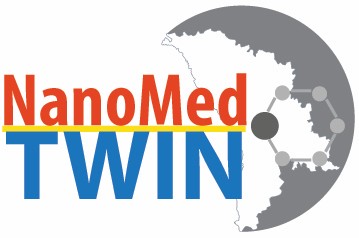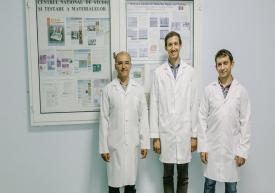This article talks about the National Centre for Materials Study and Testing (NCMST) at the Technical University of Moldova, which received €474,000 from the EU’s largest Horizon 2020 programme on research and innovation for the development of biomedical nanotechnology and the training of specialists in this field.
The funding of science in Moldova has declined significantly in recent years. According to the Academy of Sciences of Moldova (ASM), fewer and fewer young people are deciding to seriously engage in research and build a career in science at home.
Nevertheless, there are still centres that attract young specialists in the Republic of Moldova. Using a nanotechnology laboratory as an example, this article describes how science can be developed in Moldova and why young researchers do not need to leave the country to achieve results.
One of the projects aimed to stop the brain drain and give young researchers the opportunity to advance their careers is NanoMedTwin project, funded by the Horizon2020 Framework Programme. Thanks to the project, the National Center for Materials Study and Testing has received over 470,000 Euro for development of nanotechnologies for biomedical applications and the targeted training of researchers in this areas.
How nanotechnology can change medicine
The NCMST focuses on nanotechnologies, is already known far beyond the borders of Moldova and is where the NanoMedTwin project (funded through Horizon 2020) is being implemented. In 2018, its team led by the current president of the ASM, Ion Tiginyanu, together with colleagues from other countries, created material suitable for creating microfluidic devices (which can help diagnose many diseases) and sensors for space research and micro-robotics. This material, created with the help of nanotechnology, is called “aerogalnite”. This is the first inorganic material in the world that has both hydrophilic and hydrophobic properties, which means that it is able to repel and attract water at the same time.
According to laboratory staff member Dr Eduard Monayko, aerogalnite is a fully synthetic material grown in the laboratory. Scientists can give it any shape and size. It is biocompatible, therefore its absorbent properties can be used to carry out tests and diagnose diseases.
In addition to studying and improving aerogalnite, scientists are developing various nano-structuring techniques. That means they change the properties of familiar materials, applying the thinnest layers of other substances to them. Thanks to the EU-funded project, they can now continue this research and share its results with the next generation of students and scientists.
“This is a modern trend to give materials properties that we can control. They can be related to electrical conductivity or magnetic characteristics, for example,” explains Dr Monayko.
His colleague, 30-year-old researcher Dr Tudor Braniste, proved in one of his works that gallium nitride is compatible with living cells. This means that cells absorb nanoparticles based on them and due to their magnetic properties, these cells can be moved. This discovery can be used in medicine, for example, to replace cells damaged by cancer with healthy ones.
All of this is possible due to the laboratory having the necessary equipment: an atomic force microscope, devices for measuring electrical properties, a laser system and many other devices.
The centre is the only one in Moldova with a scanning electron microscope that allows research to be carried out with nanostructures. According to Dr Monayko, it was purchased back in 2001 thanks to an international grant. At that time, it cost approximately €180,000. Today this device costs at least four times as much. The device allows materials to be worked with at the nanoscale (one nanometre is a billionth of a metre).
To obtain even more accurate shots and measurements, Moldovan researchers will now have the chance to work more frequently in laboratories abroad, namely those of universities that are part of a joint project within Horizon2020.
How university education is changing
According to Dr Monayko, today the centre of nanotechnology employs up to 15 people including graduates, masters and students, to undergo practical training.
“Usually we take second-year students. When the time comes to write theses, they are prepared, as they already have jointly published articles. When I graduated from the university in 2002, there were no such opportunities. We did our practice just before the thesis, and it was very stressful,” the scientist recalls.
The centre's staff members are confident that the NanoMedTwin project will help to further expand the capabilities of students and young researchers. Students from the Technical University of Moldova, State Medical University and other research institutes will be able to take part in biannual courses on nanotechnology and medicine in Chisinau. They will be taught not only by Moldovan professors, but also by British, German and Swedish professors.
In addition, young researchers and employees of the centre will be able to undertake internships for three years in the laboratories of research institutes participating in the project: Hannover Medical School (Germany), the Royal Institute of Technology in Stockholm (Sweden), the University of Bristol (UK), the Joint Research Centre of the European Commission (Belgium) and EFPC Ltd (Israel). Researchers are also able to take one or several master's modules at one of these institutes, offering an opportunity for regular employees to develop the research that has been started.
For permanent staff of the centre, this will provide an opportunity to continue with the existing research. This way, they will be able to continue studying the properties and methods of application of the aerogalnite created last year.
Source: EUNEIGHBOURS website

